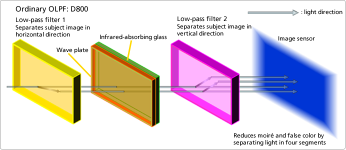I am interested in permanently manipulating a Nikon D600/D610 such that it mimics a monochrome dslr. I planned on following the instruction of the following posting:
Scratching the Color Filter Array Layer Off a DSLR Sensor for Sharper B&W Photos
If my attempt goes badly, is there a way I could purchase a replacement sensor? I can offer more information about the reason behind my crazy experiment if anyone is interested!
Thanks!
Scratching the Color Filter Array Layer Off a DSLR Sensor for Sharper B&W Photos
If my attempt goes badly, is there a way I could purchase a replacement sensor? I can offer more information about the reason behind my crazy experiment if anyone is interested!
Thanks!


